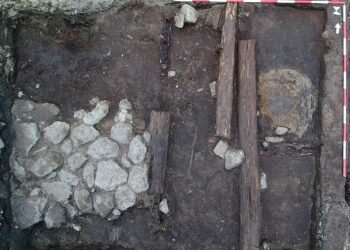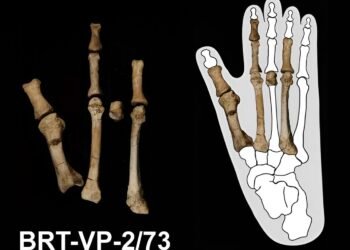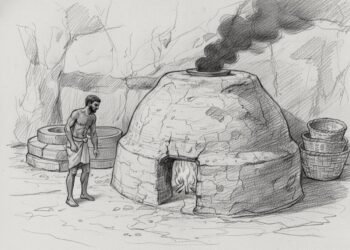New discoveries suggest that Homo naledi may have ignited controlled fires in the pitch-dark chambers of an underground cave system.

Researchers have found small fireplaces remnants and sooty wall and ceiling smudges in passages and chambers throughout South Africa’s Rising Star cave complex, paleoanthropologist Lee Berger, of the University of the Witwatersrand, announced in a lecture hosted by the Carnegie Institution of Science.
Berger climbed a narrow shaft in August to examine two underground chambers where Homo naledi fossils had been discovered. Stalactites and thin rock sheets had partly grown over earlier ceiling surfaces. Some surfaces had blackened, burned areas and were dotted by what appeared to be soot particles, Berger said.
Meanwhile, excavations of a nearby cave chamber were led by expedition codirector and Wits paleoanthropologist Keneiloe Molopyane. The researchers discovered two small fireplaces with charred wood and burnt bones of antelopes and other animals. Then, in a more remote cave chamber where Homo naledi fossils have been unearthed, the remains of a fireplace and nearby burned animal bones were uncovered.
“We have massive evidence. It’s everywhere. Huge lumps of charcoal, thousands of burned bones, giant hearths and baked clay,” said Berger.
This discovery, which is still being studied and is controversial, has the potential to change our understanding of the evolution of complex behaviors that were previously thought to be the sole domain of large-brained species such as Homo sapiens and Neanderthals.
Such behavior has never been attributed to Homo naledi before, largely because of its small brain. Berger contends that even with a brain roughly one-third the size of human brains today, Homo naledi was able to control fire.
Homo naledi was a primitive human species discovered in 2013 in the Rising Star Cave, Cradle of Humankind, South Africa, dating to the Middle Pleistocene 335,000-236,000 years ago. Berger and his team were the first to discover this species.
We now know that H. naledi was about 144 cm tall and weighed about 40 kilograms on average. It possessed a strange mix of primitive and modern features, with ape-like shoulders, a small brain that was only slightly bigger than that of a chimp, and teeth that were “more reminiscent of something millions of years old,” said Berger.
“We are fairly confident to formulate the hypothesis that this small-brained hominid, Homo naledi, that existed at the same time we believe Homo sapiens were sharing parts of Africa, was using fire for a variety of purposes,” he added.























